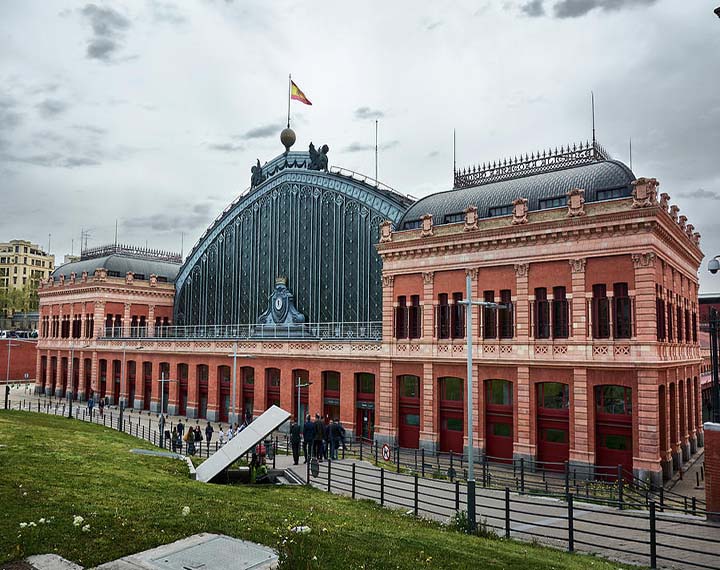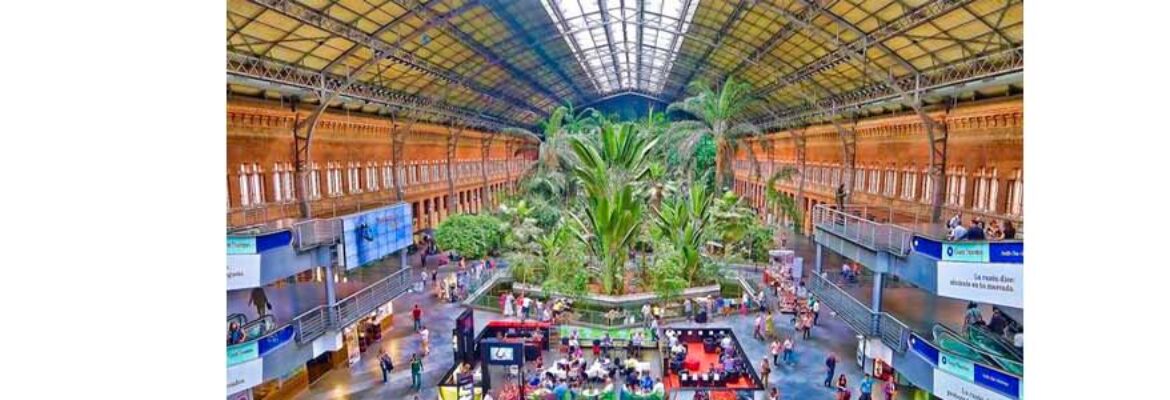
Madrid Train Station – Puerta de Atocha
On 9 February 1851 Spain’s second railway line was inaugurated, linking Madrid and Aranjuez, and with it the capital’s first railway station, Atocha, at that time a simple stopping point with a wooden platform. The station – Madrid’s largest followed by Chamartín station in the north – was subsequently expanded, in 1865 and 1892.
The station – Madrid’s largest followed by Chamartín station in the north – was subsequently expanded, in 1865 and 1892. The most notable feature of the work done in the latter year is the roof over the central section. Designed by the engineer Saint-James and measuring 152 metres long by 48 metres wide and rising to a height of 27 metres, it has become one of the city’s best-known landmarks.
Since the refurbishment carried out by Rafael Moneo between 1984 and 1992, Atocha has been a complex consisting of two stations: the old and the new. The new station is used for rail traffic, the high-speed rail terminal, long-distance trains and local services, while the old station has been assigned to RENFE offices and a shopping and leisure complex which includes a tropical garden containing 400 different species, with a total of over 7,000 plants.
A train running to and from Atocha which is particularly interesting for tourists is the Cervantes train, which takes passengers to Alcalá de Henares, where the author of Don Quixote was born.


